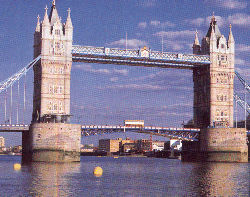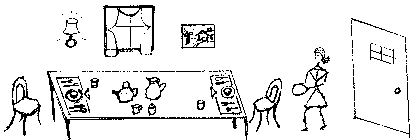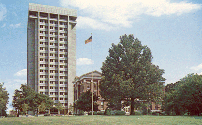'Lesson Six'

'Lesson Six'

|
|

'REVIEW of the preceding lessons':
| 'SUBJECT--THING(S)' | 'ACTION' | 'OBJECT--THING(S)' |
|---|---|---|
| 'adjective/noun' | 'verb/adverb' | 'adjective/noun' |
| ['singular/plural'] | ['one adds -li'] | ['same as the subject'] |
| --/--s | --/--li | ['one adds -s for the plural'] |
| --ed ['past'] | ||
| wil-- ['future'] | ||
| wud-- ['conditional'] | ||
| Strong man | karïed ïzili | big bagij. |
| ' ' | ' ' | ' .' |
'To form the plural of nouns, one adds -s to its singular form; to form an adverb one adds -li to the adjective; to form the past tense, one adds -ed to the infinitive; to form the future tense one prefixes wil- to the verb; for the conditional the prefix placed before the infinitive is wud-.'
| Strong mans | karied [llevó] | ïzili | big bagijes. |
| Strong mans | wil-kari [llevarán] | ïzili | big bagijes. |
| Strong mans | wud-kari [llevarían] | ïzili | big bagijes. |

'In questions, the voice rises at the end of the sentence; in its written form a question is indicated simply by placing a question mark [?] at the end of the sentence.'
'AFFIRMATION': Strong man karïed ïzili big bagij. 'Question': Strong man karïed ïzili big bagij? ' ?'

'The  letter
's' represents the sound for the letter c in such English
words as: glance, dance, fence, sentence. Hence
these words are written in Transitional English as follows: glans,
dans, fens, sentèns. It is important to remember that in
Transitional English, except for the digraphs ch, jh, ng, sh,
zh, one letter has only one phonetic value.'
letter
's' represents the sound for the letter c in such English
words as: glance, dance, fence, sentence. Hence
these words are written in Transitional English as follows: glans,
dans, fens, sentèns. It is important to remember that in
Transitional English, except for the digraphs ch, jh, ng, sh,
zh, one letter has only one phonetic value.'

'PREPOSITIONS': 'These are words  that show a relationship between two different words: pikchùr on
wöl (picture on wall) ' '; pleyt an teybèl (plate on table)
' '; kärpèt ùndèr teybèl (carpet under
table) ' '; kofi with krïm and shugàr (coffee with cream and
sugar) ' .'
that show a relationship between two different words: pikchùr on
wöl (picture on wall) ' '; pleyt an teybèl (plate on table)
' '; kärpèt ùndèr teybèl (carpet under
table) ' '; kofi with krïm and shugàr (coffee with cream and
sugar) ' .'
'These twenty-seven (27) prepositions, reduced from 54 in normal English, must be memorized in order to be recognized. They are unavoidable in the language and should be learned in the order in which they appear below.'
àráwnd (around)' ', at (at) ' ', bifôr (before) ' ', biháynd (behind) ' ', bisáyd (beside) ' ', bisáyds (besides) ' ', bitwîn (between) ' ', bùt (but) ' ', bay (by) ' ', dawn (down) ' ', during (during) ' ', for (for) ' ', from (from) ' ', in (in) ' ', ov (of) ' ', of (off) ' ', on (on) ' ', awt (out) ' ', owvèr (over) ' ', layk (like) ' ', thrü (through) ' ', tu (to) ' ', sins (since) ' ', ùndèr (under) ' ', ùntil (until) ' ', ùp (up) ' ', with (with) ' '.
'EXERCISES WITH PREPOSITIONS: Study the picture and the prepositions [in italics] in the following exercises.'

ontréy (entree), n. ' '
bowl (bowl), n. ' '
cheìr (chair), n. ' '
aftèr (after), prep. ' '
flat (flat), adj. ' '
förk (fork), n. ' '
lärjer (larger), adj. ' '
left (left), n. ' '
nayf (knife), n. ' '
napkìn (napkin), n. ' '
pleys (place), n. ' '
pleys mat (place mat), fr. ' '
pleyt (plate), n. ' '
rayt (right), n. ' '
salàd (salad), n. ' '
sit (sit), v. ' '
smöl (small), adj. ' '
spün (spoon), n. ' '
sup (soup), n. ' '
top (top), n. ' '
teybèl (table), n. ' '
weytrès (waitress), n. ' '
'IN RESTAURANT'. ('The prepositions appear in red italic letters.')
1. Window bï on wöl bitwîn
lamp and pikchùr.
2. Bisáyd window bï lamp on
left. It bï àbòv teybèl.
3. Pikchùr bï bisáyd
window tu rayt.
4. Teybèl bï bisáyd
wöl.
5. Teybèl bï ùndèr
window, lamp, and pikchùr.
6. Tu cheìrs bï bisáyd
teybèl.
7. Dher bï kofi pat and wotèr pichèr on
teybèl.
8. Wotèr bï in pichèr
and kofi bï in kofi pat.
9. Weytrès pör wotèr from
pichèr in wotèr glas.
10. Weytrès kòmed awt ov
kichèn. Shi gowed bak in kichèn.
11. Wen shi kòm awt shi bring füd
and put it on teybèl for
wi.
12. Ov-ay frend sit on òdhèr
sayd ov teybèl.
13. Ay ït süp with spün.
Frend ït mït with förk.
14. Ay drink wotèr with mïl.
Frend drink kofi with ov-hi mïl.
15. Hi drink kofi with krïm and shugàr.
16. Sins wi layk füd, wi ït
ùntil wi not kan ït mör.
17. Ov-ay frend not hav meni, bùt
ay, yes. Ay pey bil for hi.
18. Ay lïv fayvtîn pèrsént tip for
weytrès.
19. Biháynd frend bï òdhèr
teybèl and tü mör cheìrs.
20. Bifôr wi lïv, wi sey gud
nayt and thangk yü tu weytrès.
'EXERCISES (1-15)'. 'Answer the following questions in complete sentences in Transitional English':
1. Weèr bï teybèl in restàrànt?
3. Wàt yü ït süp with?
4. Wàt frend ït with förk? 
5. Hü bring füd tu yü from kichèn?
6. Frend drink kofi with wàt?
7. In wàt bï kofi dhat frend drink?
8. Window bï bitwîn wàt?
9. Wàt bï tu rayt ov window?
10. Wàt bï tu left ov window?
11. Wàt yü and frend sit on?
12. Wàt kaynd ov pleyts bï on mat?
13. Wàt yuténsìls bï on rayt bisáyd pleyt?
14. Wàt yuténsìls bï on left bisáyd pleyt?
15. Haw big tip yü lïv for weytrès?

1. Teybèl in restàrànt bï bisáyd wöl.
2. Ov-ay frend sit on òdhèr sayd ov teybèl from ay.
3. Ay ït süp with spün.
4. Frend ït mït with förk.
5. Weytrès bring füd tu wi from kichèn.
6. Frend drink kofi with krïm and shugàr.
7. Kofi dhat frend drink bï in kùp.
8. Window bï bitwîn lamp and pikchùr.
9. Tu rayt ov window bï pikchùr.
10. Tu left ov window bï lamp.
11. Frend and ay sit on cheìrs.
12. An mat bï flat pleyt and süp bowl.
13. An rayt bisáyd pleyt bï nayf and spün.
14. An left bisáyd pleyt bï tü förks.
15. Ay lïv fayvtîn pèrsént tip for weytrès.

'TWO OBJECTS OF VERB. When a verb has two objects, one serves as the DIRECT OBJECT and the other as the INDIRECT OBJECT. The latter is usually preceded in Transitional English by the prepositions tu or for. Example: Ay giv mòni tu hi.[' .'] Ay giv it tu hi. [' .'] Ay send mòni for hi. [' .'] Ay send it for hi. [' .']
àráyvàl (arrival), n. ' '
bùs (bus), n. ' '
bowt (boat), n. ' '
chïper (cheaper), adj. ' '
dipârchùr (departure), n. ' '
er (air), n. ' '
eyjènt (agent), n. ' '
eyjèntsi (agency), n. ' '
flayt (flight), n. ' '
krüz (cruise), n. ' '
pleyn (plane), n. ' '
rawnd trip (round trip), fr. ' '
rivèr (river), n. ' '
send (send), v. ' '
ship (ship), n. ' '
sins (since), conj. ' '
tikèt (ticket), n. ' '
towtàl (total), n. ' '
treyn (train), n. ' '
turist (tourist), n. ' '
'COMPARISON OF ADJECTIVES'. 'There are two ways of making comparisons: 1) by suffixes, or by 2) detached prefixes':
| 1.a) chïp (cheap) | ---'adjective'--- | 2.a) chïp (cheap) |
|---|---|---|
| 1.b) chïper (cheaper) | ---'comparative form' --- | 2.b) mör chïp (more cheap) |
| 1.c) chïpest (cheapest) | ---'superlative form'--- | 2.c) most chïp (most cheap) |
'In b) the comparison is made by adding -er to the adjective, or one can place the adverb mör (more) ' ' before the adjective. In c) the superlative is formed by adding -est to the adjective, or one can place the adverb most (most) ' ' before the adjective.'
 (I eat soup with
spoon. Friend eat meat with fork.)
(I eat soup with
spoon. Friend eat meat with fork.)| Click here for the Transitional English to Standard English and 'Your language' vocabulary. ('Translate the preceding sentence into your language'.) | Click here for the Standard English to Transitional English and 'Your language' vocabulary. ('Translate the preceding sentence into your language.') | Click here for 'Your language' to Transitional English and Standard English vocabulary. ('Translate the preceding sentence into your language'.) |
|---|---|---|
| Click here for Langenscheidt's 'Your language'-English English-'Your language' on-line dictionary. ('Translate the preceding sentence into your language.') | ||
